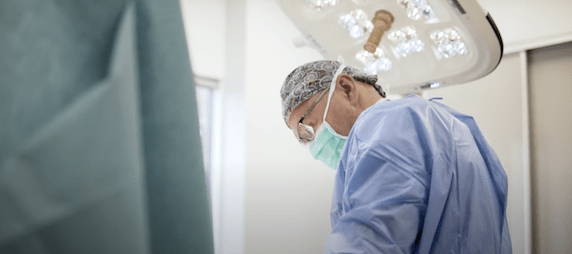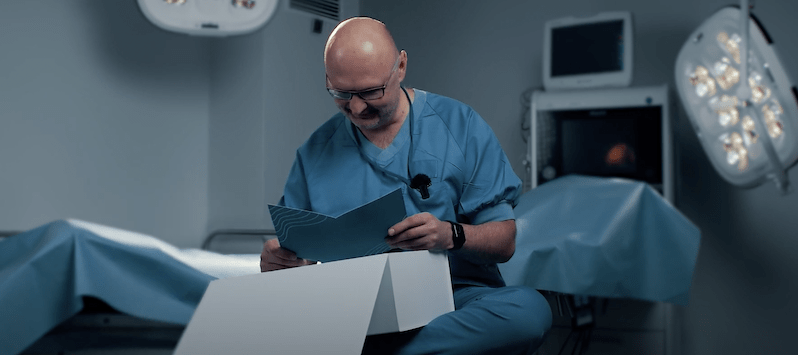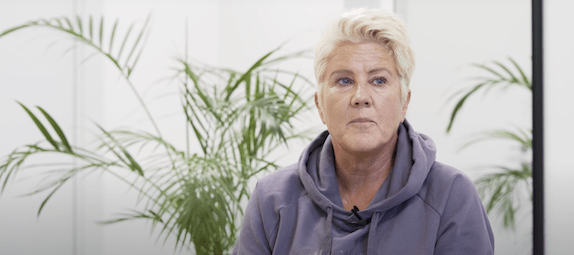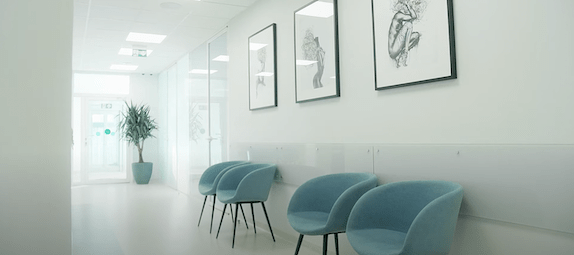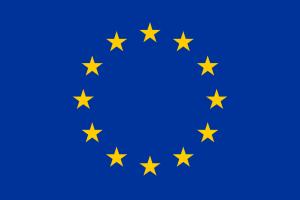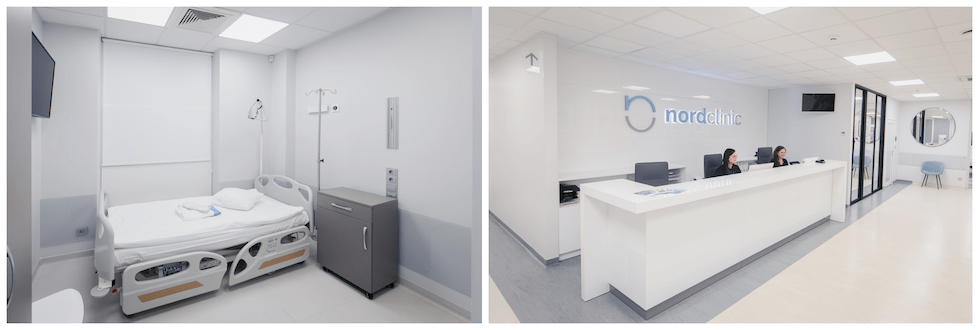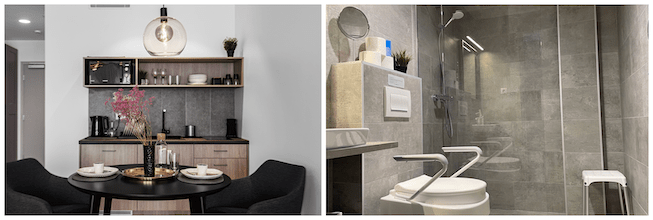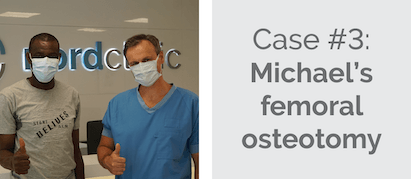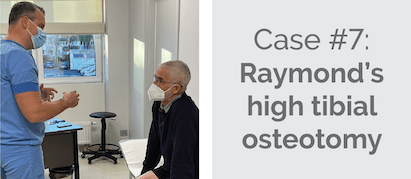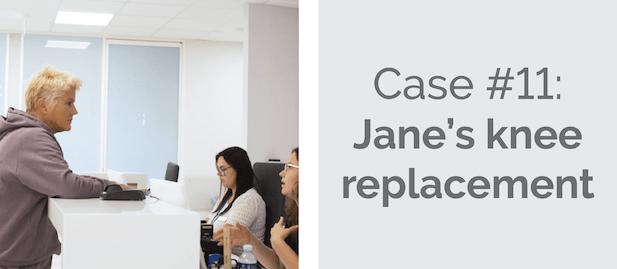High Tibial Osteotomy
We are one of the leading orthopaedic surgery clinics for medical tourists in the European Union. We are proud of the fact that over 90 % of our patients come from the UK, Ireland, Norway, Sweden, the United States, Canada and other countries.
Reviews & Facebook group
Our patients and clinic in the media
Prices
- high Tibial Osteotomy (1 leg) – 4.130 £
- femoral Osteotomy – from 4.300 £
- knee replacement – 6.340 £
- all necessary tests (Long standing X-ray performed in 1 day) – FREE
- accommodation with medical care – from 62 £ per night
- consultation with the surgeon
- necessary health tests
- surgery
- implant
- anaesthesia
- hospitalisation
- 24/7 personal assistance during your stay
- transfers to / from the airport, hotel and clinic
- all documents translated to English
Get your surgery for free by claiming a refund from your local health board. The clinic helps patients with the documents needed to claim a refund after following the EU directive route for medical treatment abroad. It applies to patients who are insured under the systems of one of the EU countries and may not get the surgery due to long waiting times.
- high Tibial Osteotomy (1 leg) – 4.660 €
- femoral Osteotomy – from 5.160 €
- knee replacement – 7.600 €
- all necessary tests (Long standing X-ray performed in 1 day) – FREE
- accommodation with medical care – from 74 € per night
- consultation with the surgeon
- necessary health tests
- surgery
- implant
- anaesthesia
- hospitalisation
- 24/7 personal assistance during your stay
- transfers to / from the airport, hotel and clinic
- all documents translated in English
Get your surgery for free by claiming a refund from your local health board. The clinic helps patients with the documents needed to claim a refund after following the EU directive route for medical treatment abroad. It applies to patients who are insured under the systems of one of the EU countries and may not get the surgery due to long waiting times.
High Tibial Osteotomy case analysis
Patient stories
Clinic videos
Nordorthopaedics Center Of Excellence
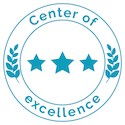
Refund for EU patients
Get your surgery for free by claiming a refund from your local health board. The clinic helps patients with the documents needed to claim a refund after following the EU directive route for medical treatment abroad. It applies to patients who are insured under the systems of one of the EU countries and may not get the surgery due to long waiting times. On average our patients from the EU countries get fully refunded by their local health board in 5 months after their surgeries.
Rehabilitation package
One of the most important factors for a quick and full recovery after surgery is proper rehabilitation. Rehabilitation helps recover after surgery as well as prevents formation of blood clots and helps avoid most of the postoperative complications and side effects. Outpatient rehabilitation in Kaunas with a physiotherapist.
The rehabilitation clinic is equipped with modern facilities. Individual rehabilitation programs are prepared by a kinesiologist with over 20 years of experience, Prof. Laimonas Siupsinskas. This type of rehabilitation is best suited for people who are physically active, athletes and those wishing to return to sports as soon as possible.
Rehabilitation in Kaunas – € 100 / £ 86 for one 1 h physiotherapy session per day.
- personalized rehabilitation course;
- specialist who is also a physiotherapist for Lithuanian Men’s National Basketball Team;
- all required medication;
- transportation to/from the rehabilitation clinic;
- read more about outpatient rehabilitation in Kaunas.
Our clinic
Self-catered accommodation with medical care
11 reasons that make us the most popular orthopaedic clinic abroad
One of the most important factors for a quick and full recovery after surgery is proper rehabilitation. Usually, clinics are not able to offer this due to costs savings. Our patients can choose between two inpatient and outpatient options: rehabilitation with a physiotherapist of the Lithuanian national basketball team, prof. L. Siupsinskas or rehabilitation at a medical SPA.
Our team of 5 orthopaedic surgeons has 10-20 years of experience in the field in total performing over 1.000 different orthopaedic surgeries per year. Moreover, our surgeons are members of various prestigious surgical societies both Lithuanian and international. Our leading joint replacement surgeon S. Tarasevicius is an author of 150 scientific publications in different medical journals, who has performed more than 3.500 joint replacement surgeries during 15+ years of his professional experience.
We are one of the leading orthopaedic surgery clinics for medical tourists in the European Union. We are proud of the fact that over 90 % of our patients come from the UK, Ireland, Norway, Sweden, the United States, Canada and other countries.
One of the world’s leading medical technology companies and orthopaedic implant manufacturers, Smith & Nephew, have chosen Nordorthopaedics as Center of Excellence in the Baltic States.
We are trusted by our patients and we appreciate all the reviews and feedback collected over the years. Find more than 150 testimonials here or on Google.
Already more than 4.000 of our former, current and future patients joined our online community with the aim to build a space for opinions and mutual support. Members are welcome to share experiences about their visit to the clinic and to discuss all surgery-related matters. No other orthopaedic clinic can offer such group support.
Being a true member of the International Society of Arthroplasty Registries, Lithuania is one of the leaders in low joint replacement revision rates, as only 9% of surgeries in Lithuania require revision in 10 years after surgery. Moreover, with the implants used at our clinic, only 2-3% of surgeries require revision in 10 years after surgery, while revision rates in some other Western countries, for example, USA, is as high as 17% in 10 years after surgery. The implants used at our clinic have been evaluated by other countries’ registries as those ensuring longest implant life, as compared to products of other manufacturers. Moreover, thanks to our active participation in collecting data for the registries, the surgical technique used at our clinic ensures best surgical outcomes.
Our clinic is seen on different media mentions like: BBC News, BBC Radio, The Telegraph, MailOnline, Winnipeg Free Press, CTV News, CBC, RTE Radio, itv.
Our clinic works according to the highest standards set by the European Union. This helps to guarantee the quality of medical services. We care about the safety, comfort and successful results of our patients from all over the world.
The clinic helps patients with the documents needed to claim a refund after following the EU directive route for medical treatment abroad. It applies to patients who are insured under the systems of one of the EU countries and may not get the surgery due to long waiting times.
We provide customer service in 9 foreign languages including English, Swedish, Norwegian, Danish, Italian, Spanish, French, Russian, Polish. Everyone in our clinic speaks English, including nurses, assistants and the surgeon.
Athletes treated at Nordorthopaedics
Official clinic of Lithuania national football teams

Highest quality implants
Our clinic uses implants based on their performance in international registries.
Being a true member of the International Society of Arthroplasty Registries, Lithuania is one of the leaders in low joint replacement revision rates, as only 9% of surgeries in Lithuania require revision in 10 years after surgery. Moreover, with the implants used at our clinic, only 2-3% of surgeries require revision in 10 years after surgery, while revision rates in some other Western countries, for example, USA, is as high as 17% in 10 years after surgery. The implants used at our clinic have been evaluated by other countries’ registries as those ensuring longest implant life, as compared to products of other manufacturers. Read more here.
13 patients' case studies
What is high tibial osteotomy?
Open wedge high tibial osteotomy, also known as high tibial osteotomy (HTO) or knee osteotomy, is an orthopaedic surgical procedure aimed to correct misaligned knees. It is usually indicated for those patients who have early-stage osteoarthritis and damaged articular surfaces on one side of the knee joint. The fundamental goals of the procedure are to realign the axis of the leg and knee to transfer weight from the arthritic part of the knee to a healthy surface. Knee osteotomy relieves pain, significantly improves knee function, and delays or prevents the need for knee replacement.
What conditions does high tibial osteotomy treat?
High tibial osteotomy effectively manages several knee conditions, including knee osteoarthritis, varus malalignment with medial side overload, osteochondritis, osteonecrosis on medial side, and some posterolateral instability.
High tibial osteotomy can be a suitable option in treating knee osteoarthritis if damage is in just one area of the joint. It preserves the existing knee structures and slows down the progression of arthritis in the knee. For this reason it allows patients to continue with their active daily life without total knee replacement or at least postpone the need of artificial joint.
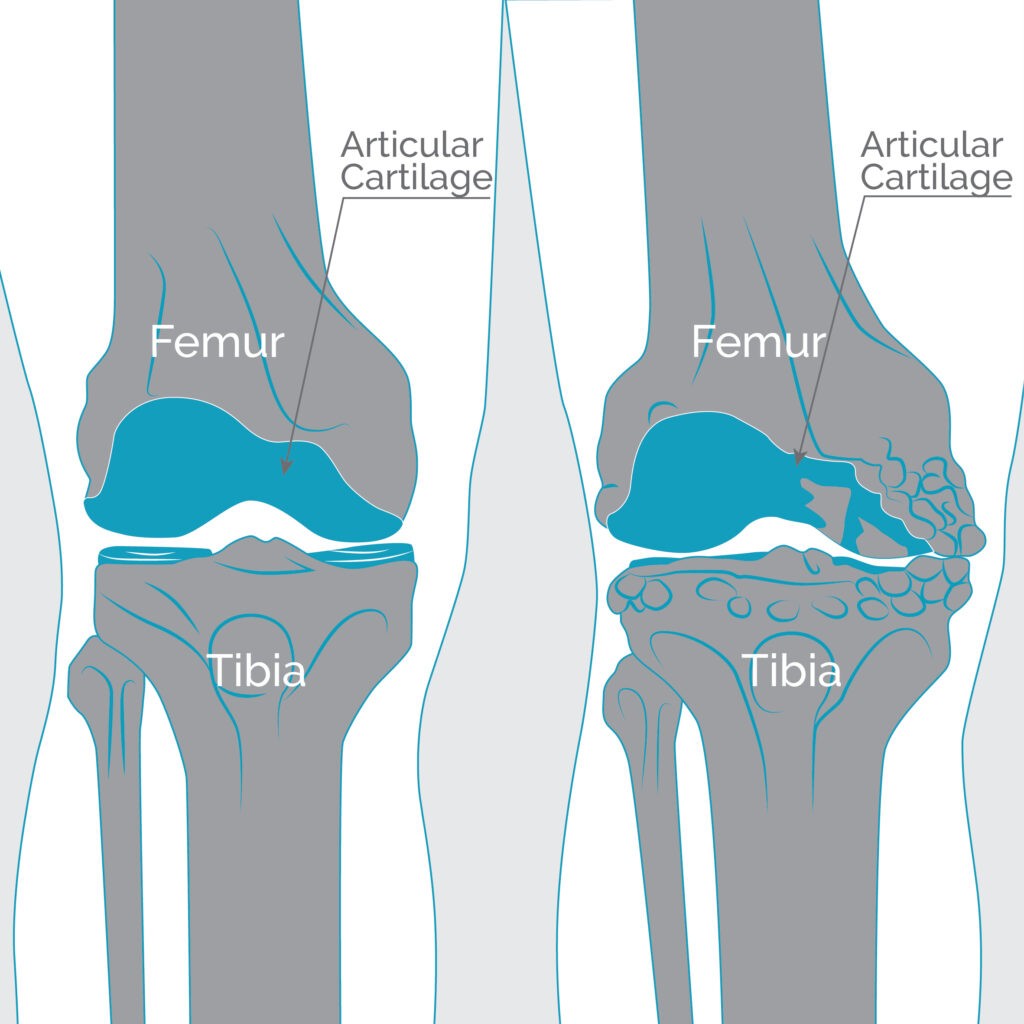
Healthy vs. knee joint affected by osteoarthritis
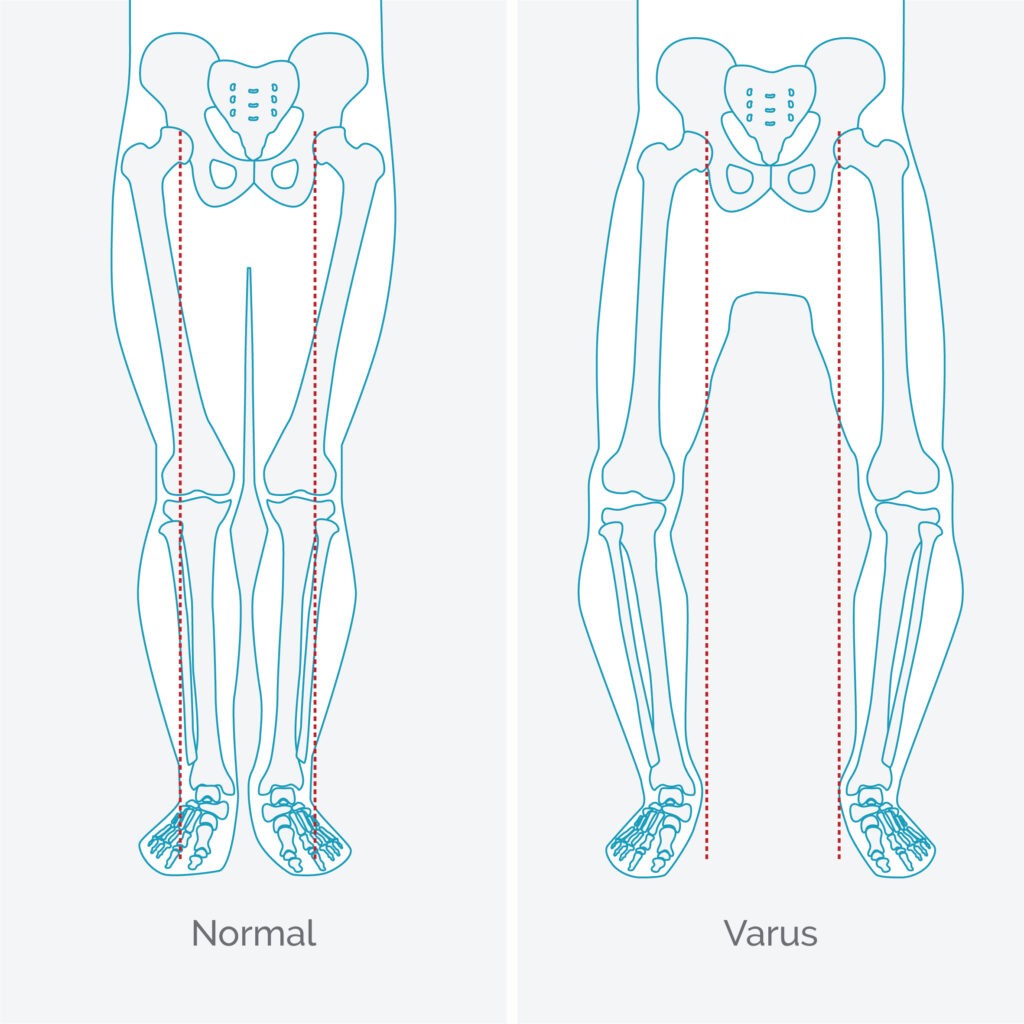
Varus deformation
Who is an eligible candidate for High Tibial Osteotomy?
High tibial osteotomy is ideal for active, non-obese patients who are younger than 60 years old. Good candidates have pain only on one side of the knee which gets worse mostly when being active. The candidates should be able to straighten the leg and bend the knee to at least 90-120 degrees. Some patients however are not suitable for a high tibial osteotomy. General contraindications include: inflammatory arthritis (an autoimmune condition), obesity (BMI>35), and ligament instability.
To determine if a patient is suitable for high tibial osteotomy not only MRI, but also long leg x-rays are needed to reliably assess the axis of the knee and know if it can be fixed.
In some cases high tibial osteotomy can be suitable for older patients if arthritis damage is in just one area and a person has been leading an active lifestyle like doing professional sports or lifelong sporting activities.
What is the difference between high tibial osteotomy and knee replacement?
High tibial osteotomy patients preserve the native knee joint and cartilages by correcting the alignment of the upper and lower leg bones.
- Prevents the cartilage from further degeneration and delays the need for a joint replacement.
- Should the cartilage deterioration progress, the patient may still need a knee replacement in 8-10 years.
- High tibial (open wedge) osteotomy is performed when only medial side of the joint cartilage surface is damaged.
- Usually the surgery is suitable for younger than 60 years old patients, however, in some cases patients can be older – professional athletes or people who have been doing lifelong sporting activities.
- Most patients fully recover in 3-6 months post-surgery.
Knee replacement is a radical procedure that is only performed in severe joint disease patients.
- It is an effective treatment for end-stage knee arthritis.
- It is indicated only when it is impossible to preserve the knee joint and when the articular cartilage is damaged on medial, lateral sides ant patellofemoral joint.
- General well-being and stability of immune system are what determines the success of a surgery. These factors depend entirely on an individual and may not be objectively evaluated by one’s age or BMI.
- Knee replacement requires a longer recovery time. It takes 3 months for swelling to go down; however, it can take up to 1 year to recover fully.
How to prepare for a high tibial osteotomy?
Firstly, a prospective patient should schedule an initial consultation with an orthopaedic surgeon. During the first consultation, the surgeon performs a medical examination, evaluates the knee joint, and determines the best treatment plan. The surgeon may ask to have certain imaging tests performed, like a knee X-ray, long leg standing X-ray, a CT scan and MRI. Before surgery, patients also have to see their anaesthesiologist to discuss the anaesthesia choices
All patients are advised to cease smoking a month before and after the surgery, because nicotine increases the risk of complications and prompts blood clot formation.
Ensuring good nutrition and a healthy lifestyle during the pre-operative period will make recovery a lot easier and faster.
Also, it is recommended to arrange the furniture at home so that there is enough space to move around with crutches. If needed, one may temporarily move the bedroom downstairs to avoid unnecessary walking up and down. It is also a good idea to install a shower seat since it makes showering post-op much easier.
On the day of the surgery, it is recommended to wear comfortable clothing, avoid wearing make-up and nail polish. All patients must not eat 6 hours before the surgery to avoid regurgitation while under anaesthesia. Before surgery, patients have to undergo the last lab tests, like a urine sample, a blood test, and an electrocardiogram (ECG).
What happens during high tibial osteotomy?
High tibial osteotomy procedure takes approximately 2 hours to complete. It can be performed under general or spinal anaesthesia. During surgery, a surgeon uses an arthroscope (a special miniature camera) to look inside the joint and evaluate the condition of the cartilage, ligaments, and menisci. Then, the surgeon makes a 6-7 cm incision to access the shin bone to make a cut and create the wedge opening on medial side. In case if opening is more then 10mm, a bone graft is required to fill the osteotomy site. It helps the bone to heal where it was cut. After desired correction of the axis, the bone is fixated with dedicated medical implants (plate and screws). Such alteration changes the weightbearing axis and shifts the weight from the damaged arthritic part of the cartilage to a healthy side, thus relieving pain. After the surgery is finished, the surgeon closes the incision, bandages the leg, and places it in a hinged brace. In some case, when the patient’s health state is good enough, two legs may be operated during one surgery.
What happens after high tibial osteotomy?
- After surgery, patients stay in the clinic for 24-48 hours. The patients receive continuous care and intravenous painkillers.
- Movement after surgery is limited, but patients are encouraged to get up and walk with the crutches with partial weight-bearing (20kg) on the operated leg.
- The leg should be kept elevated most of the time to avoid swelling.
- When at home, it is best to take enough time to rest.
- Feeling tired and mild discomfort is completely normal. For pain control at home, patients are prescribed anti-inflammatory drugs, like ibuprofen or naproxen.
- The bandages should be kept clean and dry. We recommend the patients use a shower seat and place the leg in a cast-over or a plastic bag.
How long does it take to recover from high tibial osteotomy?
Recovery can be divided into 4 phases. Each of them has different goals and recovery exercises.
During the first 2 weeks, patients are encouraged to rest and keep the leg elevated to control swelling. Hinge brace has to be used at all times, including sleeping, but it can be removed during exercise. Exercises include heel slides when laying on the back or sitting, knee flexion, and soft stretching.
Weeks 2 to 6 are dedicated to non-weight bearing strengthening. During this time, patients continue to only walk with the crutches to allow for bone healing. The patients should be able to flex the knee fairly easily and fully extend it by the end of 6 weeks. Recovery exercises include straight leg raises when lying down, stretching hamstrings and calves, and increasing muscle strength and endurance.
Weeks 6 to 12 are dedicated to increase and improve weight-bearing. During this time, patients should progress from partial weight bearing to walking without crutches. By this time, patients should have full and pain free knee range of motion. The goals of this phase is to increase cardiovascular strength and regain balance. Exercises include stationary biking or elliptical trainer, standing stretches, hip strengthening exercises, sit-to-stand exercises and others.
During 3 to 6 months post-surgery, patients should be ready to return to regular activities. The goals are to continue cardiovascular strength, further improve balance, and progress to sport-specific training. Exercises include sit-to-stand exercises, kickbacks, lunges, using wobble boards to improve balance, biking, and treadmill for quick walking, and others.
Send us your enquiry









